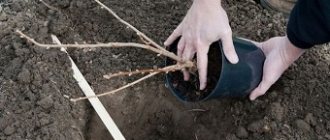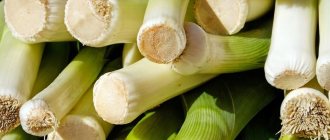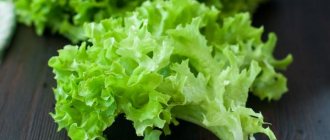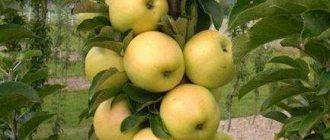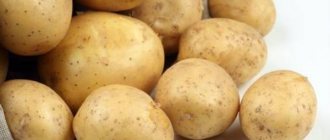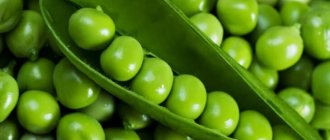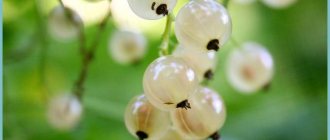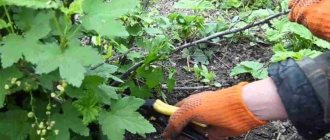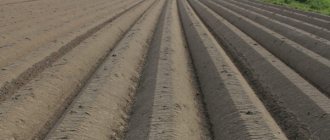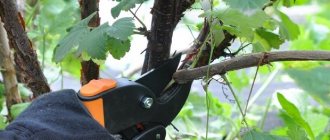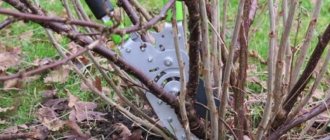White fairy
The second name of this variety is Diamond. Currants were bred using the hybrid fund of N. Smolyaninova. It is recommended to plant bushes in the central regions of Russia, since in the northern regions there is a high risk of freezing.
Related article:
How to plant currants in the fall
The shrubs have a dense crown and grow up to 1 m in height. The shoots are strong, located at a slight angle. The variety is self-pollinating, productive, and resistant to most common diseases.
The berries are transparent, regular in shape, weighing 0.7 g. They are collected in hanging clusters and have a dense peel that allows the fruit to be transported without damage. The taste is sweet, with pronounced sourness.
Ways to propagate a bush
White currants reproduce quite easily. A novice gardener can do this.
By cuttings
With this method of propagation, preparation of planting material begins at the end of winter. 1-2 year old semi-lignified cuttings are suitable for rooting. How to proceed:
- in February you need to cut cuttings (use only a healthy plant);
- treat the upper straight cut with wax or paraffin;
- treat the lower (oblique) cut with a growth stimulator (“Kornevin”);
- place the cutting in a jar of water so that the liquid only slightly covers the oblique cut;
- After rooting, the plants are planted in a school for growing.
In autumn, young bushes can be planted in a permanent place.
Squirrel
Auto varieties - L. Bayanova. This variety of currant was bred in 1996. It ripens in mid-summer. The shoots of the bush are straight, light brown in color. Plants tolerate frost and sudden weather changes well. They are rarely infected with fungus, but are highly sensitive to mites.
The brush grows up to 10 cm long. It bears fruits weighing 0.5-1 g. The harvest can be harvested from the second year of planting. From 1 bush you get up to 4.5 kg of berries with a sweet and sour taste and gelling properties.
Related article:
Golden currant: 7 varieties with the most delicious berries that you definitely need to try
Beneficial features
White currant: care and cultivation
Calorie content of white berries is 42 kcal per 100 g.
White currants are rich in vitamins:
- A (7 mgk). Support the immune system, improve vision;
- C (40 mg). Fighting vitamin deficiency, activating the immune system;
- Group B. Improving memory, stimulating intellectual development, maintaining the health of hair and nail plates, responsible for skin elasticity, increasing erectile function in men;
- E (0.3 mg). Elixir of youth, protection against cataracts, resistance to free radicals;
- Calcium (36 mg). Production of hormones, strengthening bones;
- Iron (0.5 mg). Oxygen saturation of organs and tissues;
- Magnesium (9 mg). Relieving chronic fatigue and insomnia, preventing muscle spasms;
- Potassium (270 mg). Prevention of ulcerative pathologies;
- Phosphorus (23 mg). Normalization of energy exchange, coordination of acid-base balance.
White grapes
A variety that ripens in mid-summer and tolerates frosty winters and drought well. This type of currant can be grown in cold regions because it is not afraid of spring frosts.
On a compact bush, specimens weighing up to 1 g ripen with a pleasant dessert taste. The skin is thin, with a yellowish tint, translucent. From one plant you can get up to 4 kg of harvest per season.
Sweet varieties for the Leningrad region
The Leningrad region is characterized by sharp temperature changes - due to the proximity of two oceans. Therefore, thaws in January or cold rain in mid-July are by no means uncommon for these lands.
Attention! Heat-loving species of white currant will not be able to take root in such weather conditions. It is better to opt for frost-resistant plants - frosts in this region are considered commonplace.
White Dutchman
Dutch white currants definitely do not belong to late varieties: at the beginning of July, most of the berries already reach maturity. Juicy and sweet fruits with a barely noticeable sourness will appeal to adults and children, especially if in the hands of a skillful housewife they turn into tasty winter preparations.
The low shrub, which prefers a temperate climate, thrives on the lands near the northern capital: it is not afraid of cold winters, as well as the constant rains characteristic of this region.
Dutch pink
Another representative of the Dutch currant also feels great in temperate climatic conditions. A plant with pink berries tolerates frost even better than a typical white representative: it can withstand even prolonged and severe cold.
But this species is much less resistant to diseases: in order to maintain high yields and prevent the plant from withering, it is necessary to promptly treat the bush from powdery mildew and anthracnose. And then, already in mid-summer, large pinkish fruits with an excellent sweet taste will ripen on the branches.
Belyan
An early ripening variety, bred in Siberia in 1963 at the Horticulture Research Institute named after. Lisavenko. The Red Cross variety was used for pollination, so the resulting plant has similar characteristics to it.
The shrub is medium-sized, with moderate foliage density. The branches are straight, rather thick, gray and brown. The plant tolerates drought and frosts down to -34 degrees well, and feels great in the Moscow region and the middle zone.
Related article:
How to properly care for currants
The berries are thin-barked, weighing 0.6-1.5 g, light yellow, translucent. The brushes are dense and not very long. Of all the varieties of white currant, it has the most pleasant and rich taste. Among the disadvantages is poor transportability: the crop must be processed immediately after harvest.
Contraindications for eating white currants
Due to the abundance of vitamins in its composition, exacerbation of allergies to one of the groups often occurs. Therefore, before use, you need to check with your therapist whether you have an intolerance to vitamins A, B, and C.
Despite this warning, there is no need to be afraid of negative effects on the functioning of the body. Experts only highlight some cases where eating a large amount of berries leads to a negative result:
- digestive diseases - due to the large amount of acids, stomach ulcers can be aggravated;
- general intolerance - extremely rarely observed in young children.
If you consume white currants in moderation, there will be no negative consequences. It is worth knowing a sense of proportion even when drinking homemade tincture or wine.
Boulogne
A mid-early variety of domestic selection, which was undeservedly forgotten. The plants are low, with a compact crown. They can be planted more densely than recommended by agricultural technology.
The crop produces a good harvest, which ripens at the end of July. Up to 4 kg of currants are collected from the bush. The variety is winter-hardy, not afraid of frost, but is susceptible to anthracnose and other fungal diseases.
The berries are medium size, 0.7-0.9 g, sweet and sour and juicy. The skin has a pinkish tint and is dense, making the fruit easily transportable and suitable for fresh consumption and winter storage.
Related article:
How to prevent swelling on currant leaves
Versailles
One of the most common varieties of white currant. It was bred by French breeders at the end of the 19th century. The shrub is medium-sized, up to 1.2 m high. The leaves are dark green in color, with abundant light a lilac tint appears on them.
The plant easily tolerates dry summers, but freezes in cold winters. The yield is high - up to 4.5 kg per bush. It begins to bear fruit in the fourth year, the berries appear in July-August. The crop is not susceptible to powdery mildew, but often suffers from anthracnose.
The berries are large, sweet and sour, weighing up to 1.3 g, with thin cream-colored skin. The variety is suitable for harvesting and transports well.
Features of variety selection
The criteria for choosing white currant seedlings are the same as for red currants - except that the root system in this case will be less developed and extensive, and the roots do not have a fibrous structure and can dry out for this reason. In young plants of white currant varieties, the bark on the shoots has a grayish color and a rough structure, the buds are pressed tightly (in black, the bark is yellowish, and the buds extend from the branches).
There are practically no scent glands on the shoots and leaves, so if you rub the leaves, the characteristic aroma will not appear. When buying a seedling, it is more difficult to distinguish red varieties from white ones - you will have to rely on the integrity of the seller. Let's figure out how to choose a white currant variety, taking into account the climatic characteristics of the region and other factors.
By region
When choosing the best variety of white currant, you should rely on regional zoning, and not advice from breeders or reviews. The State Register of Varieties gives the following recommendations regarding the selection of white currant varieties for cultivation in certain regions:
- Center, Central Black Earth region - Kremovaya, Almaznaya, Bayana, Smolyaninovskaya.
- North and North-West - Smolyaninovskaya currant.
- Volga region and Ural - Belyan, Uralskaya Belaya.
- Siberia - Belaya Minusinskaya, Belaya Potapenko.
- The remaining territories and all the regions listed above are Versailles white currants.
What are the best varieties of red, black and white currants grown in the Middle Zone are described in this material.
For the North, North-West, and Siberia, the main criterion for choosing berries is the ripening time and the degree of frost resistance.
The choice of variety is directly related to the climatic conditions of a particular region - for the Ural part, disease resistance is important, therefore all varieties with extended harvesting, late flowering and fruiting are rejected; for the North, the main indicator is frost resistance. In the Central and Central Black Earth regions, almost any berry can take root, but only if there is sufficient shade in the heat and abundant watering.
In the south of Belarus and Ukraine, it is not so much the variety that is important, but proper cultivation, since white currants do not tolerate moisture deficiency and scorching heat in principle.
Belaya Fairy, Smolyaninovskaya, Primus are generally universal varieties with dessert taste.
How is it different from black and red?
The composition of white currants includes proteins, carbohydrates, fats, valuable microelements, fiber, pectins, organic acids, beta-carotene, and ash. The calorie content of berries is low, so anyone who is on a diet can safely consume it. White currants do not contain any coloring substances, which often cause allergic reactions.
The most popular white currant varieties are Versailles and White Fairy. A little less often, but also very often, Russian gardeners choose Juterborg, Smolyaninovskaya, and Dutch crops.
The fruits contain a lot of vitamin C, which acts as a biocatalyst for enzymatic processes. A number of scientific studies have found that it triggers active metabolic processes an hour and a half after you eat it. Vitamin A strengthens the immune system, supports the organs of vision, and stimulates metabolic processes at the cellular level. It also prevents the formation of tumors and protects against aging.
A large amount of vitamin P has a beneficial effect on blood vessels and normalizes blood composition. This element also improves the functioning of the adrenal glands, restores the liver, and accelerates the outflow of bile. Vitamins P and C together effectively prevent the development of atherosclerosis. The high content of vitamin E turns the berries into a real elixir of youth and beauty.
B vitamins take part in the synthesis of fats, proteins, nitrogen, strengthen the central nervous system, restore brain cells, improve memory, and increase mental and emotional stability. Minerals support the immune system and restore the heart muscle.
Pectins are responsible for the removal of bad cholesterol, cleanse blood vessels, and prevent the development of heart disease. Pectins are a kind of antidote that accelerates the elimination of harmful substances. Organic acids actively resist intestinal infections, destroy viruses and bacteria. Doctors say that just one tablespoon of berries a day will strengthen the body's defenses and restore health for many years. It is also believed that white fruits increase male strength and quench thirst well. You can eat the berries in their pure form or use them to make wine, juice, baked goods, sauces, desserts, jams, and compotes.
Although white, black, and red currants belong to the same group of plants, there are differences between them:
- White currants differ from black currants in their long multi-berry clusters, high sugar content, and minimal acid content. The characteristic aroma is practically not felt. The size of the berries can be very different - this is a matter of taste and, of course, the variety.
- Most white currants are self-fertile, but yields will be higher if at least a couple of different varieties grow nearby to allow for cross-pollination.
- Most white currant varieties bear fruit in July. From one bush you can collect 4-9 kg of delicious fruits.
- The sweet and sour hue of white berries is similar to red ones, but it is less pronounced.
Check out the list of the best blackcurrant varieties.
Viksne
A relatively young variety, which was bred in 2005 by Latvian scientists. This type of currant quickly spread throughout Russia; it is recommended for industrial and amateur cultivation. The shrub is resistant to frost and weather changes, so it is suitable for growing in regions with cold climates and is not susceptible to fungal diseases.
Related article:
Remove the excess to get the best: 7 principles for pruning currants
The brushes are large, reaching 9 cm in length. The fruits have the shape of a regular sphere, weight - up to 0.9 g. The taste is sweet and sour, so the berries are suitable for fresh consumption and for making jam.
Dutch
An old variety, common in the Urals and central regions of Russia. Its main difference is its high frost resistance, which is ideal for northern regions.
The shrubs are low, up to 1.2 m. The buds appear quite early, the flowers bloom when the frosts pass. The crown is spreading; when planting, it is worth increasing the traditionally recommended distance between plants. Productivity is above average: up to 9 kg can be harvested from one bush with good care.
Fruits with thick skin, transportable, up to 0.7-1 g. Creamy color, sweet and sour taste. The berries are very juicy and release moisture when picked.
Important! Caring for currants: 5 most common mistakes gardeners make
Features of planting and care
White currant is an unpretentious plant. But to obtain consistently high yields, it is recommended to observe certain features.
Optimal timing and landing scheme
Autumn is ideal for placing shrubs with an open root system in the garden: late September - early October. If it is impossible to plant a bush in the fall, you can plant it in early spring (before the buds awaken).
Seedlings with a closed root system can be planted at any time (if the soil is sufficiently warm).
When planting several shrubs, it is recommended to take into account their habit. The branches of neighboring plants should not overlap. The average distance between plantings is 1 m.
Soil preparation and fertilization
Before planting the plant, it is recommended to prepare the planting hole in advance. It is done six months before the expected planting.
The size of the pit is 60 x 60 x 60 cm. The excavated soil is mixed with mature organic matter (a bucket of compost, humus). Then the soil is returned to its place and the hole is closed.
Before planting, it is recommended to deoxidize the soil (if necessary): add ash, fluff lime, and dolomite flour.
When planting, fill the hole with a complete mineral complex (potassium, phosphorus).
Technology for planting white-fruited cuttings
When growing white currants in open ground, it is recommended to perform proper planting. How to proceed:
- First you need to inspect the seedlings. Remove damaged and dead roots. If the root system has dried out, it is recommended to soak the plant for 2 days in the Kornevin solution.
- Leave 2-3 strong shoots, cut the rest at the base. Shorten strong shoots to 2-3 buds.
- Lower the bush into the prepared planting hole, tilting it to the north at an angle of 45 degrees. Deepen the root collar by 2-3 cm. It should be planted this way for better root formation and active shoot growth.
- Compact the soil around the plant and water it. Then mulch the tree trunk circle with peat or dried grass.
See also
Description and characteristics of Vologda currants, cultivation and careRead
A correctly planted bush begins to grow quickly and bear fruit.
Dessert
A frost-resistant variety that can be grown throughout the Russian Federation. It tolerates even severe cold well, does not freeze, and does not lose productivity. Up to 6 kg of crop is harvested from the bush. The plant has powerful roots, so it can go without watering for a long time. Rarely becomes infected with fungal diseases.
Related article:
To make black currants sweet
The fruits ripen early. The weight of one is about 1 g. They have a pleasant taste and are suitable for making jam, jelly, fruit drinks, and for freezing.
Agricultural technology
Landing rules
Currants are planted both in the fall (the last ten days of September - the first days of October) and in the spring, usually in April. It is advisable to prepare a place for the culture in the fall.
Choose a place for planting currants that is illuminated, without close groundwater. Planting in marshy and low-lying areas is not recommended. High humidity gives rise to lichens, and then the death of the bush.
Soil requirements:
- fertility;
- water, - and breathability.
Neutral or slightly acidic soil with a pH of 5.5 is suitable. Acidified soil is limed. White currants like loam and clay soil, but they also grow on other, lighter and more fertilized soil.
When digging the earth, fertilizers are applied per 1 m2 of area:
- compost (bucket);
- superphosphate (20 g);
- ash (200 g);
- potassium sulfate (10 g);
- urea (15 g).
A hole for planting currants is dug half a meter wide and 40 cm deep. Soil fertilized with peat, humus, and superphosphate is poured onto the bottom. To form powerful roots, white currants are planted at an angle of 45°. Maintain an interval between bushes of 1-1.5 m to avoid crowding of plantings and ensure the development of the plant. Before planting, currants are kept in water for a day.
On a note. The agricultural technology for spring and autumn planting of currants is virtually no different.
Secrets of care
Features of caring for currants include pruning, watering, fertilizing, and pest control.
Trimming
At the beginning of spring, after the snow melts, sanitary pruning of white currants is performed: removal of old, diseased, broken, frozen branches. Before flowering, plants are treated with Bordeaux mixture (1%). The mulch is raked under the bushes and the soil is loosened to a depth of 7-10 cm. After 21 days the operation is repeated.
Care
Shape trimming to the spot - before sap flow or in the fall. In newly planted currants, reduce the branches to 3-4 buds. Bushes that are 2-3 years old are left with 3-4 developed shoots. The root cutting of the remaining branches is carried out to the base. Every year, 3-4 strong shoots are left from the root shoots, and the rest of the shoots are removed. The procedure is carried out until the currant has formed up to 16 or 20 skeletal branches of different ages. The growths of annual fruit-bearing branches do not need to be pruned - this threatens to reduce the yield.
In summer, the soil on the site is kept moist and loose, and weeds are regularly weeded.
Watering
Timely watering of white currants at the stage of berry formation is appreciated. Otherwise they become small and tasteless.
It is important that the soil is saturated with water to a depth of 30 cm. They consume 20-30 liters of liquid per 1 m2 of plantings. To retain moisture in the soil, add mulch under the currants.
Fertilizer
In the summer season, it is time to carry out foliar feeding on the foliage using polymicrofertilizers. Prepare a solution from 10 liters of water, to which add:
- zinc sulfate (2-3 g);
- copper sulfate (1-2 g);
- manganese sulfate (5-10 g);
- ammonium molybdate (2-3 g);
- boric acid (2-2.5 g).
Fertilizing is accompanied by mulching the soil with a mixture of manure and peat. Promotes the digestibility of fertilizer, retains moisture, and also protects currants from weeds. Spraying the bushes will have a positive effect on the size of the fruits and their ovary.
Pest and disease control
Carefully monitor the condition of white currants during the growing season. The appearance of harmful insects and diseases on currants signals the need to use fungicides, biological products or herbal infusions. Agronomists emphasize that white currants are resistant to glass and currant mites. The appearance of powdery mildew does not cause much harm to the bush.
On a note. A reliable and effective way to reduce the risk of disease is to water the currants with hot water in the spring before the buds open.
Reproduction methods
Propagation of white currant varieties is carried out:
- cuttings;
- layering.
Cuttings
The most common method of propagating crops is cuttings. They prepare 25-30 cm cuttings that are cut from annual bushes. To retain moisture, they are immersed in paraffin. This ensures long-term storage of planting material in the refrigerator. Before planting currants, clean the paraffin layer. When planting cuttings, 4 buds remain under the ground, the minimum number on the surface is 2. It is necessary to add humus or peat during planting. For rooting, maintaining moisture in the seedling for a long time is useful.
Potapenko
A mid-early variety, bred in Novosibirsk in 1991. To obtain it, scientists resorted to cross-pollination of currant varieties such as Red Cross and Red Siberian. The variety was named after the name of its creator. Shrubs are well adapted to growing in Siberian regions.
Related article:
5 mistakes when growing currants that deprive you of your harvest
The plants are low-growing, frost-resistant, and almost not affected by diseases. The berries ripen early; from 1 hectare you can get up to 6 tons of fruit. The berries hang on the branches for a long time after ripening, do not spoil or fall off.
The fruits are small, weighing up to 0.8 g. The skin is white-cream, dense. The taste is sweet and sour, and was rated by tasters at 4.7 points on a 5-point scale.
Basic plant care
You should constantly loosen the ground under the bush for normal air circulation, which is so necessary for the roots.
This is especially true in those regions where the soil is clayey, and after each watering it becomes very hard. Loosening can be combined simultaneously with weeding. Also, caring for the shrub involves the annual formation of the crown. In order for the shrub to optimally consume nutrients and strength, weak and diseased branches must be removed using pruning shears.
This way you will also protect the plants and increase their vulnerability to common diseases. In addition, timely formation of the bush has a beneficial effect on the quality of the crop.
Experienced gardeners note that during the first time after planting it is necessary to grow as much green mass, leaves and shoots as possible. Then in the next seasons there will be much more harvest.
In addition, they recommend trimming only diseased and dry branches as necessary, leaving the bush as it is.
These crops do not like wet soil and react sharply to excessive watering. This is, of course, not a reason to plant the bush on a hill, since the roots still need food.
However, if the summer is rainy, then there is no need to water at all. And if the summer is dry, then you can water it a couple of times a month, combining it with the procedure of feeding the bushes.
Feeding
Speaking of feeding, we should take this procedure more seriously, since white currants, unlike red currants, for example, react very positively to the abundance of light, to the free space around them and grow well in acidic soil.
White currants should be fed once or twice during the entire growing season. If you are not lazy at this stage, the bush will reward you with excellent fruiting. The berries of such a bush will have a different taste and will contain a lot of useful substances.
The bush is usually fertilized before it blooms and after the bush has finished bearing fruit. Here everyone chooses the composition of fertilizers themselves. You can use both organic and mineral compounds. Again, manure will be optimal, since it contains the maximum of elements.
It is optimal to fertilize the shrub during watering, since here the plant will better absorb all the beneficial substances.
The fertilizer is diluted in a proportion of 40 g per 10 liters of water. It is important not to overdo it here, since oversaturation with nutrients also negatively affects plants, as does their deficiency.
Harvesting
The most useful thing would be to eat white currant fruits directly from the branch. This way you will get the maximum of all the beneficial substances contained in the berries. And, as mentioned above, the first harvest of berries can be harvested a year after planting the bush.
Ripe fruits are stored for a very long time. Thus, the finished berries can hang on the bush even before the onset of cold weather. Therefore, do not worry if you were unable to visit your site on time.
In general, the fruits ripen closer to August. If the regions are cold, then around the end of summer you can harvest.
When the crop is harvested, it must be consumed immediately or processed. Because the collected berries do not last long and may turn sour. If there are too many berries, you can make wine or jam from them.
Preparing the plant for winter
The next step after harvesting is to prepare the plant for winter. Here you should cut off weak and diseased, dry branches, and feed the bush with the necessary elements. Particular attention should be paid to the root system of the bush, as it will be responsible for how the bush overwinters.
The more nutrients there are in the roots, the easier the difficult period will pass. In addition, if the bush has been attacked by pests, then it is necessary to treat the branches with special anti-insect preparations.
If the bush is young, it should be covered with oilcloth, film or tarpaulin before wintering. Or some other material. Because heavy snowfall and wind or heavy precipitation can mechanically damage the bush, and it will not survive the winter.
If the bush is not very strong, then it is even better to tie it up.
Reproduction
If you managed to successfully grow your first white currant bush, then you can start propagating the bush rather than buying ready-made seedlings. Especially if you like the harvest and fruits.
Experienced gardeners share their knowledge and talk about how to properly propagate a currant bush, since propagation can be carried out both by cuttings and using layering. This process is not so easy, so you need to be patient.
— Cutting propagation method
This propagation method is used in the spring, before the first buds appear on the branches. First, you should choose the most important, so-called mother bush. The plant must be strong and strong, mature and healthy.
All instruments must be sanitized to prevent the introduction of any diseases or larvae. It is worth choosing a stem that will be no thicker in diameter than 1 cm. This is done so that there are no fruits on this branch. Indeed, in this case, the plant will direct all the beneficial substances to the development of roots.
And besides, if you fail to propagate a plant by cuttings, then much damage will not be caused to the bush, and, consequently, to the harvest.
It is also recommended to select the lowest cuttings. Since they are considered the strongest, which means they will definitely take root. When the soil has warmed up well in the spring, which will be around April, you can plant the prepared cuttings in open ground.
To avoid freezing of the cutting during return frosts, it should be covered with film and the ground should be fertilized properly.
— Reproduction by layering
If you propagate shrubs by horizontal layering, then everything is simpler, which is why this method is more popular. Those who are just starting to garden often use this method of propagation.
Here, on the contrary, it is necessary to choose shoots that have already been actively bearing fruit for several years. This branch should be pressed tightly to the ground and tied, or better yet, buried to a depth of about 5 cm. If the layering does not lend itself and does not fit, the layer of powder can be made thicker.
If you have done everything correctly, then you can move on to fertilizing the soil around the layering.
This procedure should be carried out in clear weather, in the absence of precipitation.
Jumping
Belarusian variety obtained by crossing 3 varieties of red and white currants. The bushes are adapted to growing in difficult conditions and tolerate severe frosts and drought. Among the disadvantages is a tendency to spotting.
The fruits are round, with a pinkish tint, pleasant sourness against a background of sweet taste. They weigh up to 0.9 g. Up to 15 tons of crops are harvested per hectare per season.
Diseases and pests of white currant
Like any other plant, white currants have their own pests and diseases. The most popular insects that strive to destroy crops include:
- Caterpillars actively attack foliage during the flowering period of the plant. If their activities are not stopped, white currants will spend resources on restoring the system rather than on yield.
- The bud moth is a dark butterfly with white stripes. It begins to attack the plant even when the buds appear. It feeds on nutrients and actively reproduces. After the raids, it leaves behind a sick plant and no harvest.
- Currant aphid - can be confused with an ordinary midge. However, small burgundy spots appear on the leaves. If the plant is not treated, it will die within a year.
Popular diseases of white currant:
- powdery mildew;
- anthracnose;
- rust;
- striped mosaic;
- terryness.
Most diseases occur against the background of the activity of such insects as: currant mite, woodlice, and gall midge. Pests leave behind damaged stems and leaves, which over time begin to draw strength from healthy shoots.
Timely care and treatment of plants will help you save yourself from unnecessary hassle. However, a correctly selected hybrid also plays an important role, which will not inherit a predisposition to diseases from the parent.
Ural
Winter-hardy variety with excellent yield, reaching up to 6 kg of berries per bush. The plants are low, with a dense, lush crown. They are self-pollinating, not picky, and can tolerate any weather conditions, even severe frosts. The variety is suitable for cultivation in the Moscow region and the Volga region.
The berries have a pleasant taste and appearance. The weight of one fruit is 1 g. The bushes need regular, abundant watering. In its absence, over time they become smaller and the yield decreases.
Related article:
Currant pruning: golden rules
Jüterborg
The variety has been cultivated in Russia since 1959. Its exact origin is unknown. It is grown both on an industrial scale and in summer cottages. The bushes are low, with thick glandular hairs on the shoots.
The berries are large, up to 1.2 cm in diameter. Up to 8 kg of harvest per season is obtained from the bush. The fruits are spherical in shape and ripen in the second half of summer. The taste is sweet and sour, since currants contain a large amount of ascorbic acid and pectin.
Benefits of the plant for human health
If we talk about the beneficial properties of the plant, it is important to note the large number of useful substances and various vitamins and microelements that white currant berries contain.
A long time ago, not only berries, but also the leaves of the bush were used for medicinal purposes, since they also contain useful substances and components. Regular consumption of white currant berries, especially directly from the bush, increases a person’s immunity to diseases, as they contain a large amount of vitamin C.
In addition, the berries are full of vitamin A, which has a positive effect on vision and memory. Therefore, this type of currant is very popular among older people.
Tinctures made from white currant berries also have a positive effect on the functioning of the gastrointestinal tract. In addition, they help cleanse the liver of harmful substances.
Currants contain a lot of useful fiber, and regular consumption of fruits prevents the formation of cancer disorders.
For medicinal purposes, you can use not only an infusion of berries and the berries themselves, but also various decoctions of leaves and bunches. You can brew them into tea and drink them to cleanse the body. In addition, white currant extract is used in cosmetology.
